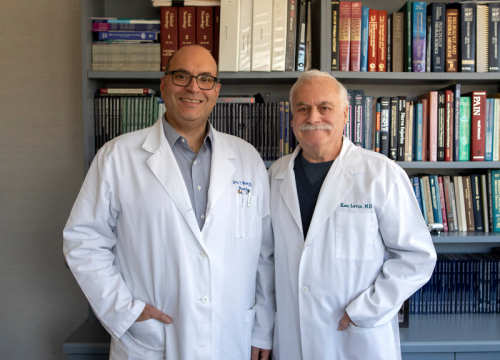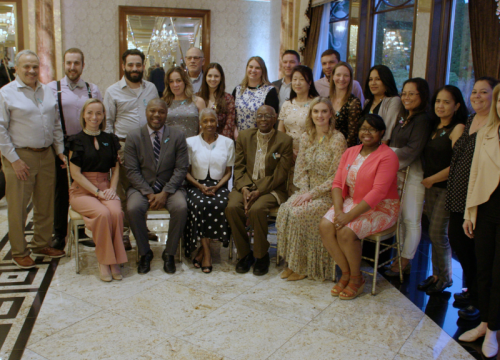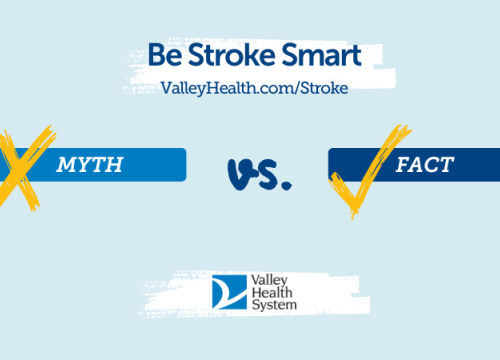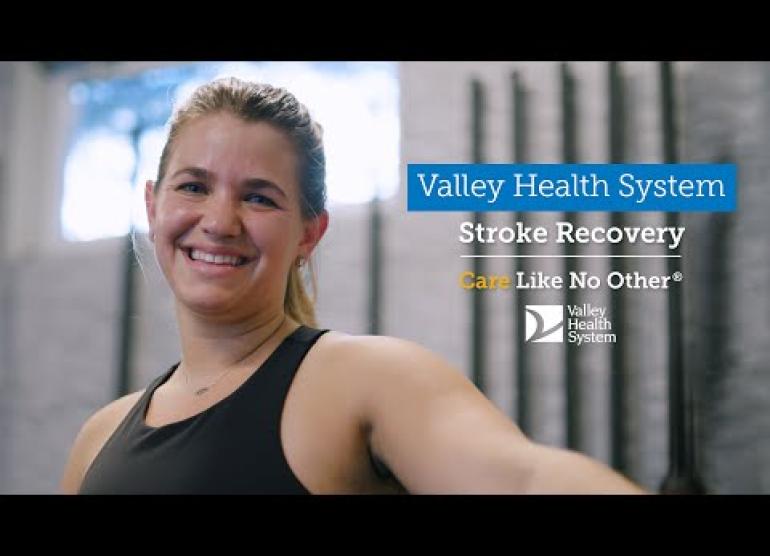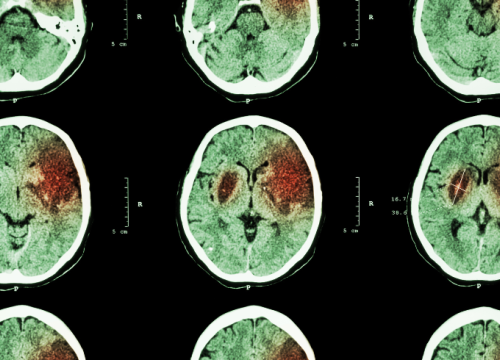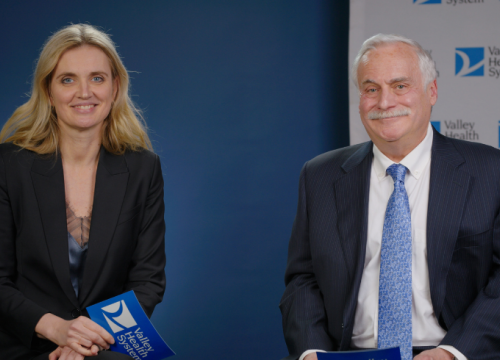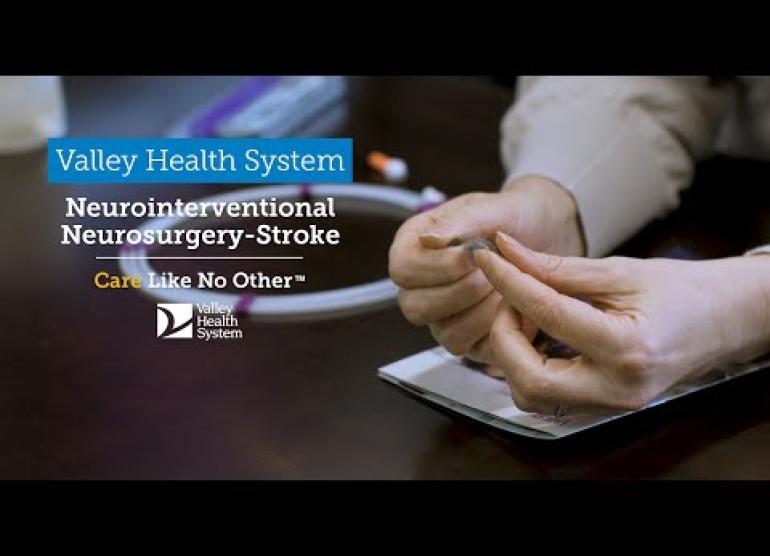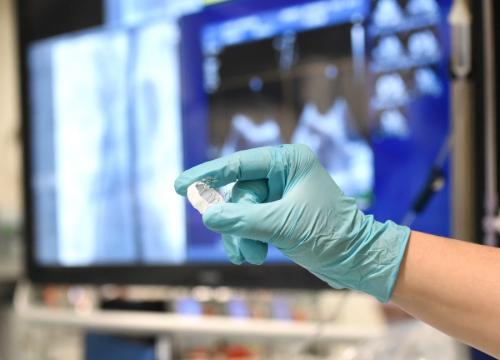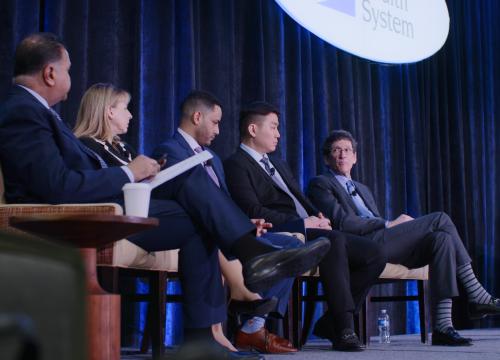If you have a cerebrovascular condition — a problem with one of the blood vessels in or around your brain — it’s important to seek highly specialized medical care. When blood vessels in your brain or neck become narrow or weak (or don’t form properly), you’re more likely to have a medical emergency such as a brain aneurysm.
Fortunately, Valley neurosurgeons offer the most advanced treatments for cerebrovascular conditions in northern New Jersey.
Our neurosurgeons are highly skilled in minimally invasive techniques — referred to as endovascular or neurointerventional procedures. We specialize in fixing blocked, ruptured or other abnormal blood vessels without using large surgical incisions or opening your skull (craniotomy). This approach allows for a faster recovery and fewer side effects than traditional brain surgery.
Watch: Patient Ralph Cashell had a subdural hematoma that was causing bleeding in his brain. When he came to Valley, his endovascular neurosurgeon Dorothea Altschul, MD, stopped the bleeding using an advanced minimally invasive procedure that did not require any incisions in his head.
The Valley Approach to Endovascular Neurosurgery
Whether you need treatment for a brain aneurysm, arteriovenous malformation (AVM) or pulsatile tinnitus, we can help. Our endovascular neurosurgeons can use a minimally invasive approach to access your brain from the inside using hollow, flexible tubes (catheters).
- First, we’ll insert the catheter through a tiny incision in your wrist or groin (though we go through the wrist whenever possible). Then we’ll gently advance it through your blood vessels until it reaches the part of your brain needing treatment. Once the catheter is in place, your surgeon can pass medicine or tiny treatment devices — such as stents, balloons, glue and metal wires or coils — through the catheter.
- Throughout the procedure, we use a special type of X-ray technology called a cerebral angiogram. This lets us see real-time images of your blood vessels, blood flow and catheter placement. It also allows us to confirm that your treatment worked.
At Valley, we offer this minimally invasive approach for both planned and emergency procedures.
Endovascular Neurosurgery Procedures at Valley
We offer the full range of procedures to reopen blocked arteries, seal ruptured blood vessels and more. Our areas of expertise include:
- Aneurysm coiling: A tiny platinum coil placed inside a bulging blood vessel (aneurysm) blocks any more blood from entering the bulge. This prevents the aneurysm from rupturing.
- Flow diverter stent: Instead of placing a device directly inside the bulging part of an aneurysm (which resembles a balloon), a stent is placed in the main artery that feeds the aneurysm. This redirects blood flow away from the aneurysm.
- Woven EndoBridge (WEB) aneurysm treatment: This flexible, expanding mesh ball serves two purposes: it fills the bulging portion of an aneurysm and also redirects blood flow away from it.
- Angioplasty and stent placement: A tiny balloon is inflated inside a narrowed artery. This widens the artery, so blood can flow through it more easily. Then a tiny mesh tube (stent) is placed in the artery to keep it propped open.
- Embolization: Seals a ruptured blood vessel or blocks blood flow to an AVM, chronic subdural hemorrhage, tumor or dural arteriovenous fistula.
- Epistaxis (nosebleed) embolization: Seals a blood vessel that’s causing frequent or severe nosebleeds.
- Tumor embolization: Blocks blood supply to a brain tumor.
- Venous stents: A stent placed into the vein behind the ear alleviating pulsatile tinnitus, whooshing noises and/or a condition called intracranial hypertension
- Thrombectomy: is the process called designed to unblock a clogged artery tiny metal device resembling a cage or an aspiration device captures a blood clot stuck inside an artery. The blood clot is then pulled out of the artery. This process is done emergently when a stroke is happening.
Watch: Director of Neurointerventional Neurosurgery Dororthea Altschul, MD, discusses how Valley uses minimally invasive techniques to repair unruptured brain aneurysms.
Endovascular Spine Procedures
In collaboration with our spine surgeons, we can also use endovascular techniques to treat compression fractures in the spine. The following spine procedures can be performed using catheters:
- Kyphoplasty: Your surgeon inserts a special balloon inside a compressed, fractured vertebra. The balloon is then inflated, raising the vertebra to its normal height. This also creates space that your surgeon can fill with bone cement.
- SpineJack procedure: Your surgeon implants a tiny titanium device that resembles a car jack into your vertebra. The device expands, and in conjunction with cement restores the compressed vertebra to its normal height.
- Vertebroplasty: Your surgeon injects bone cement directly into a cracked vertebra.
- Lumbar puncture: also known as spinal tap is a procedure where a think, hollow needle is intersted into the lower part of the spine (the lumbar region) to collect a sample of cerebrospinal fluid.
Conditions Treated
- Arteriovenous Malformation (AVM)
- Brain Aneurysm
- Brain Tumor
- Carotid Artery Stenosis
- Cavernous Malformation
- Cerebral Hemorrhage
- Cerebrovascular Disease
- Chronic Subdural Hemorrhage
- Dural Arteriovenous Fistula
- Epistaxis (Nosebleed)
- Hemorrhagic Stroke
- Idiopathic Intracranial Hypertension
- Intracranial Stenosis
- Ischemic Stroke
- Moyamoya Disease
- Pseudotumor Cerebri
- Pulsatile Tinnitus
- Subdural Hematoma
Why Choose Valley for Endovascular Neurosurgery?
- State-of-the-art operating room: Valley’s sophisticated “hybrid” operating room (OR) is equipped for both traditional brain surgery and endovascular neurosurgery. With computer guidance systems, 3D imaging and video integration available during every procedure, our specialists can quickly and easily transition from minimally invasive to “open” surgery should the need arise. And because we can perform cerebral angiograms in our hybrid OR, we can immediately confirm whether a treatment worked without having to move patients to a separate imaging suite.
- Radial artery (wrist) access to the brain: Whenever possible, our endovascular neurosurgeons insert catheters through the radial artery in the wrist instead of the large femoral artery in the groin. Studies have shown this approach, called radial artery access, offers you a lower risk of bleeding, faster recovery and a more comfortable experience overall.
- Enhancing stroke survival and recovery: We offer endovascular procedures that widen the treatment window for ischemic stroke (caused by a blood clot). We can perform a procedure called a thrombectomy, which physically removes the blood clot, up to eight hours after a stroke occurs. This means we can help people who didn’t make it to the emergency room in time to receive intravenous clot-busting medication (which must be given within 4.5 hours).
- A leader in brain aneurysm care: Valley was among the first health systems in the nation to offer WEB aneurysm treatment. This innovative new device makes it possible to repair a type of aneurysm (called a wide-neck aneurysm) that’s difficult to treat with open brain surgery or standard endovascular techniques.
- An abundance of support: We know how scary it can be to learn you need medical treatment in or near your brain. If you need help understanding your diagnosis or treatment options, or have questions about your long-term recovery, you can count on Valley’s neuroscience nurse navigators for guidance and support. Our endovascular neurosurgery team also includes a nurse educator who will help you understand what to expect before, during and after your procedure.
- Neuroscience intensive care unit (ICU): Patients recovering from some endovascular neurosurgeries are cared for in our dedicated neuroscience ICU. In this unit, you’ll be cared for by our Brain Squad nurses. These nurses have advanced training and expertise in addressing the distinct needs of people who have had brain surgery



